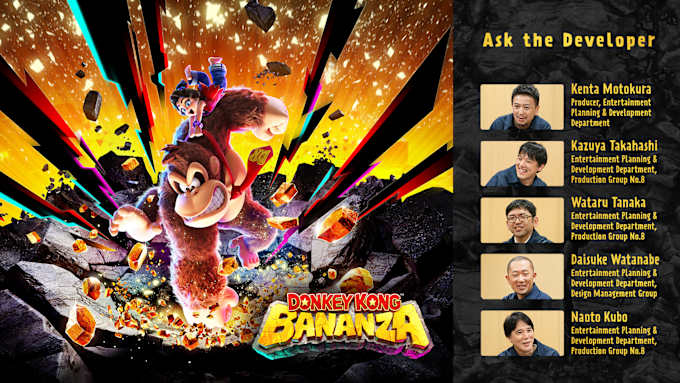Some of the images and videos shown in text were created during development.
This article has been translated from the original Japanese content.
-
Chapter 3: Sparking interactions
Chapter 3: Sparking interactions
Earlier, you mentioned how the player keeps heading deeper underground. I’ve noticed that each of the Underground World’s Layers has its own distinct environment. How did you go about creating those different environments?
Takahashi:
We started by giving each Layer its own theme, then we came up with unique gameplay ideas using voxels. We also considered the materials we talked about earlier. We asked ourselves questions like, “What if there was a Layer made of ice or lava?”. And since it’s possible to ride chunks of stone you’ve torn off like a skateboard, we thought it would be fun to create a Layer with rolling hills that would really entice you to do that. For each of these Layers, we started by thinking about the kind of gameplay we wanted to create.
Watanabe:
We wanted players to experience a sense of surprise each time they reached a new Layer. So, while figuring out the gameplay, we also thought about each area’s colour scheme, unique features, and so on. We made sure each Layer felt distinct, and looked at the world’s overall balance to develop the concept art.
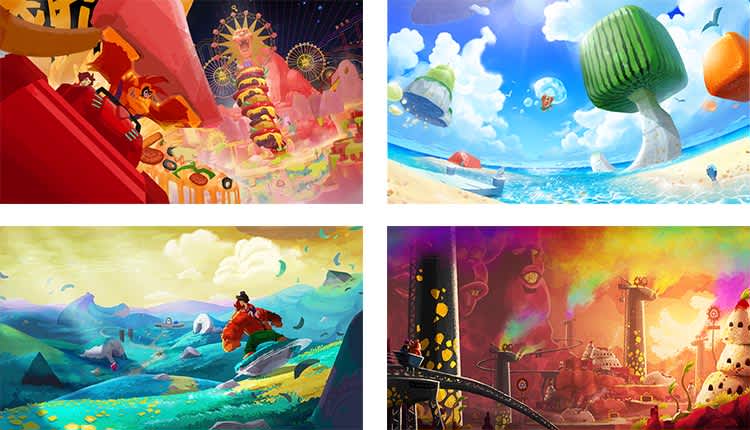
Some of the concept art hearkens back to the original Donkey Kong, with vibes of Brooklyn, New York. How did those designs come about?
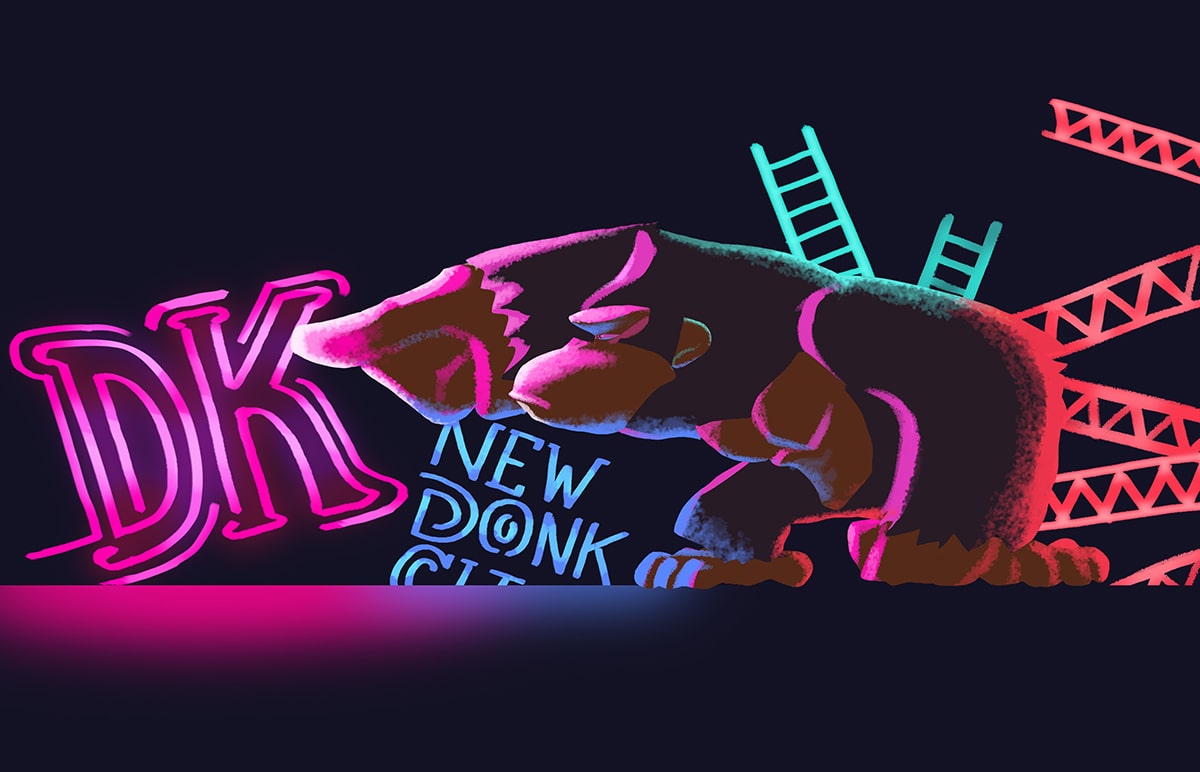
Motokura:
In Miyamoto-san’s mind, Donkey Kong’s world always felt like New York City. When we asked him early on, “What is Donkey Kong?” he explained that the steel beams and ladders in the original Donkey Kong game were inspired by the neon lights of New York City. Even the star in the “O” of the logo was inspired by the American aesthetic.
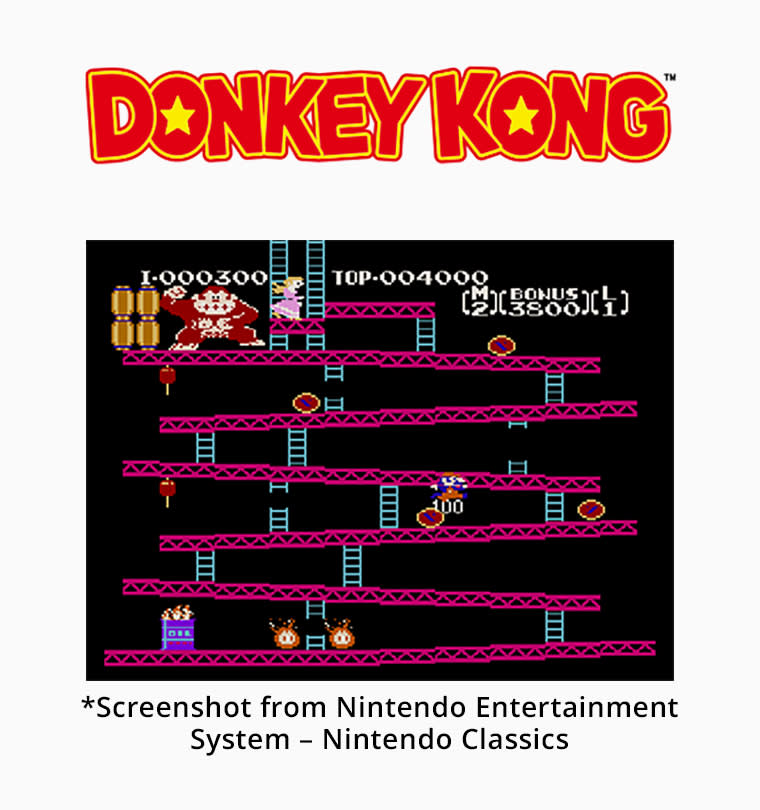
Motokura:
I think the original Donkey Kong game lies somewhere in between the wildness of Donkey Kong Country, and something more urban.
Watanabe:
Our goal was to make the Underground World feel like an entirely separate civilisation to that of the surface and to cram it full of variety. We felt compelled to create a fresh new world for Donkey Kong, so instead of sticking to what past games in the series had done, we made sure each Layer had its own unique world and flavour. That said, we did draw inspiration from Miyamoto-san’s original vision of Donkey Kong. By weaving neon colours into the visuals as a key element, we aimed to create something fresh while still evoking the feel of the original arcade game. By the way, the pink and light-blue neon tones were inspired by the colours of the ladders and steel beams in the original game.
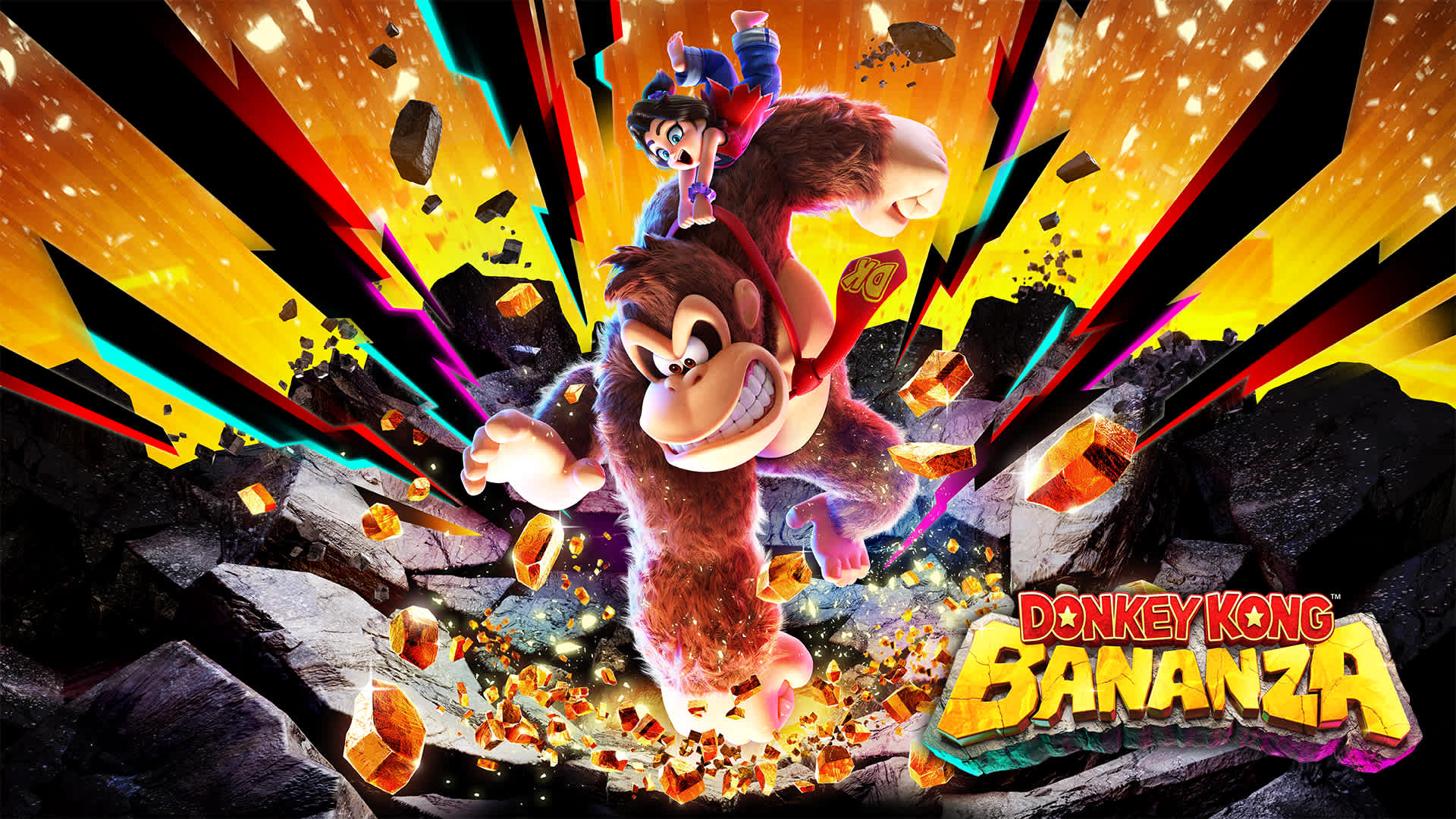
Kubo:
We also composed music that adds to this experience. When a player reaches a new Layer, the music helps to draw them in and sets the tone for the world they’ve just entered. This game is all about destruction, but since players can spend long periods of time exploring the same Layer, having only fast-paced music that relentlessly pushes them to take action would end up being exhausting. To strike the right balance, we used percussion to inject some groove but made sure the music also adds to each Layer’s unique atmosphere.
I got the chance to browse though some of the development materials. It looks like you really mapped out how the mood and intensity of the music shift throughout the game.
Kubo:
That’s right. The way the story’s tension builds and the liveliness of each Layer really impact the sense of enjoyment. So we carefully considered the overall musical balance. We might build up excitement in one Layer, then shift to something more serious and dreamlike in the next. That wide range of musical expression may be one of the game’s defining characteristics. In past Donkey Kong games too, although the music was mostly built around a cheerful, jungle vibe, it also featured tracks that were deeply enchanting or mysterious. I think that sense of musical variety is something we’ve carried over into this game.
On the flip side, having the flexibility to make it so varied can lead to choice paralysis. During your trial-and-error process of exploring what music worked, did you ever consider leveraging music from previous games in the series?
Kubo:
The series has a lot of recognisable background music, so of course, Donkey Kong Bananza has arrangements of those sprinkled throughout, too. However, it’s also a completely new Donkey Kong game, so we momentarily set aside the fact that it’s part of a series and took up the challenge of composing new tracks from scratch. At the same time, Donkey Kong’s new transformation mechanic was added, which meant we had to create tracks that would play while he’s in his transformed state. That’s when one of the designers came up with this sketch of a zebra as one of his transformations.
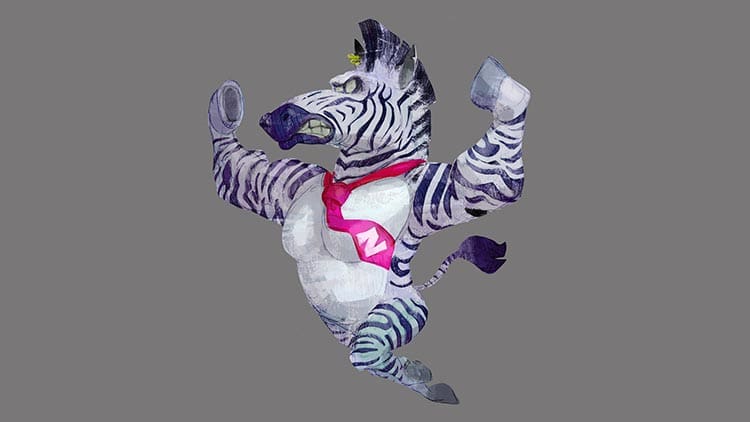
Wow, this is…quite something.
Kubo:
And they declared, “Donkey Kong will transform into this!”. (Laughs) The mere sight of this sketch was enough to shock me, but actually seeing it programmed into action, I thought to myself, “Well, since we’ve gone this far, we might as well also transform the music that plays once Donkey Kong has transformed”. Changing the music that plays is actually quite a big deal. Even in Mario games, we don’t go that far unless it’s a major transformation, like getting a Super Star and turning invincible. But since Donkey Kong only transforms for a limited time and it has such a big impact on the gameplay, we decided to go all out with transforming the music. We envisioned a track that would give you the urge to sprint as soon as you heard it, and then the image of a zebra galloping passionately to Latin or Spanish-style music popped into my head. I mean, not that Latin music has anything to do with zebras, but still… (Laughs)
Everyone:
(Laughs)
Who would’ve imagined this zebra sparking such a complete shift in the music?
Kubo:
I know, right? And then, just as we were thinking, “Oh, that transitioned quite nicely. This might be rather interesting”, Motokura-san comes along and says…
Tanaka:
So that was when it happened.
Motokura:
Right, and I said, “Maybe we can add Pauline (11)?”. (Laughs)
Everyone:
(Laughs)
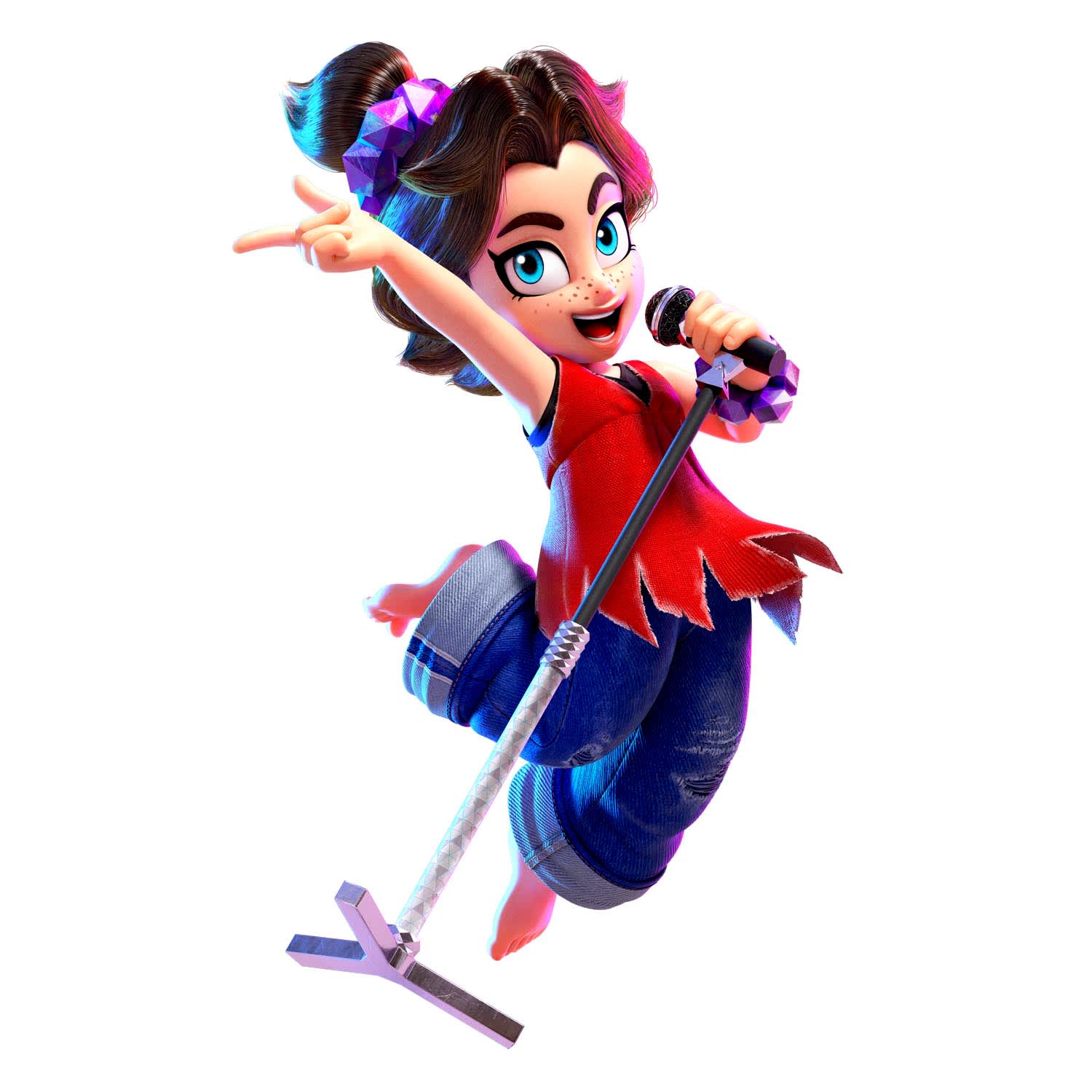
(11) A character that appears in the Donkey Kong and Super Mario series. In Super Mario Odyssey, she is featured as the mayor of New Donk City in the Metro Kingdom, and sings the theme song Jump Up, Super Star!
Motokura:
Originally, we were discussing whether to have Pauline in the game as a character that players could relate to. But at the time, we weren’t able to incorporate Pauline into a gameplay feature unique to this title. However, now that the transformation mechanic had started to take shape, we thought we could create something new by tying Pauline’s singing to the Bananza transformations. So I asked Kubo-san, “Would you care to write an animal song for Pauline to sing?”.
Kubo:
Not just one. He requested one for each and every Bananza transformation. (Laughs) But I thought I might as well go full swing, so I added vocals to the Latin and Spanish-style music. Even though it was the same base track, the response I got from the team was completely different, much more positive. It made a strong impression on me. That really cemented my sense of how powerful the human voice is.
Motokura:
When I made that request, Kubo-san, I wasn’t leaving until I’d heard a “yes” from you. (Laughs) We had the same situation for Super Mario Odyssey, didn’t we?
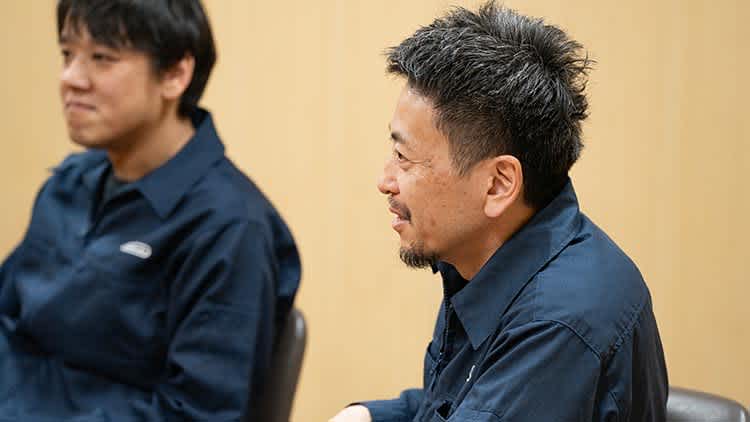
So, it was only decided later in development that Pauline would appear in the game?
Motokura:
It was after we’d created the destruction gameplay to a certain extent. In the story, Donkey Kong is motivated by his love of bananas, but we wanted to have something else that players could relate to. By featuring Pauline, we thought we could create an experience where players are a part of Pauline’s growth and the growth of Donkey Kong, adventuring alongside her. The best part was that it gave us the chance to incorporate various gameplay features using the power of song, such as breaking seals or showing the route to a destination.
Takahashi:
Because she’s a human character, she can take on the role of explaining things. And since she opens up about her feelings when she visits the Underground World for the first time, players can empathise with her, giving them the feeling that they’re with her on the adventure.
Watanabe:
I think the story is also entertaining, and Pauline’s presence played a big role in that. If Donkey Kong were on his own, we could never have included as many talking scenes.
Takahashi:
Donkey Kong and his friends, as well as their enemies, the Void Company minions, are all headed for the Planet Core in the hopes of having their wishes granted. Although they all have the same goal of heading underground, their motivations differ. Donkey Kong is just out for bananas, Pauline wants to return home to the surface, while the Void Company seeks to hog the wealth for themselves. I think the fact that their enemies are also Kongs is another thing that distinguishes Donkey Kong Bananza.
Motokura:
As a side note, if you use GameShare (12) or share your Joy-Con 2 controllers, player one controls Donkey Kong, while player two controls Pauline. Pauline can attack their enemies with vocal blasts. Since the game’s on Nintendo Switch 2, player 2 can also use Joy-Con 2 mouse controls when playing as Pauline, so I hope you’ll give that a try.
(12) A paid Nintendo Switch Online membership is necessary when using GameShare via GameChat. Find out more about using GameChat on the official Nintendo Switch 2 website.
Tanaka:
You can wreak havoc with her singing voice alone, so I think you can have fun just smashing things. If you keep on destroying things, you’ll eventually hit upon treasure chests with maps of Banandium Gems and fossils. It’s a unique co-op experience, so I hope even those who are new to video games will feel comfortable to give it a try.
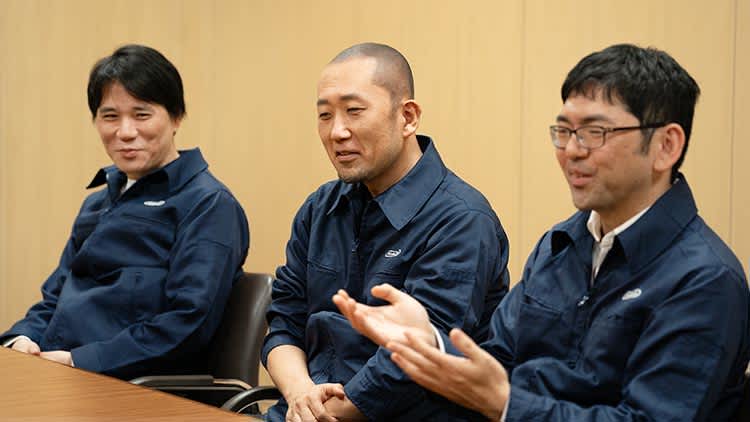
Thank you. I’m curious to see Pauline in action, and I’m relieved to hear you can also enjoy the game in a way that isn’t too taxing on the brain. Finally, could each of you say a few words to everyone who’ll be playing this game?
Kubo:
In this game, you progress by smashing all kinds of things. Your surroundings change constantly, so we worked hard to create sounds that reflect that change. We measured the sizes of areas such as open spaces and caves, and adjusted the volume and reverberation accordingly. Even for the background music, we split each song into multiple tracks and adjusted the balance according to Donkey Kong’s surroundings and the size of the area. I think it’s an audio experience unique to games that use voxel technology, so I hope players will listen out for those details too as they play.
Watanabe:
I think Donkey Kong is fun to play in this game, with his rich facial expressions and exciting moves. I’d love for players to experience it for themselves. Also, the Underground World where this game takes place is a bit different from previous games in the series. It’s a beautiful yet strange world, and I hope players will enjoy it to the fullest as they journey together with Donkey Kong and his friends. Oh, and smash everything in their paths, naturally. (Laughs)
Tanaka:
I think the gameplay mechanic that lets you destroy everything, right down to enemies and NPCs (non-player characters), stands out as being unique to Donkey Kong Bananza. Not only are things destructible, but the presence of materials expands the gameplay experience even further, with some things being hard and impossible to break with his bare hands, or thorny, et cetera. It would be great if players were also on the lookout for actions based on materials, like tearing off part of an enemy that’s made of explosives and using it to destroy other stuff.
Takahashi:
There’s a lot of leeway in terms of progression in this game. For example, locations or parts of the story you can skip without suffering any consequences. When the game progresses in a way we hadn’t intended, we call it a “sequence break” in development terminology. Typically in game development, restrictions are put in place to prevent this from happening, but since this game is all about destruction, we wanted people to play freely. Truth be told, restrictions make things a lot easier for us developers. (Laughs) But please do experiment.
Motokura:
I think the strength of video games in general is the player’s ability to spark interactions. In previous 3D Mario games, too, we created gameplay based on those kinds of interactions. But I think we were able to take that to a whole new level in Donkey Kong Bananza. We devoted ourselves to creating a game that feels instinctive to play, no matter how many times you’ve played it. We developed this title with great care and an awareness that Nintendo wouldn’t be where it is today, if not for the original Donkey Kong game. As well as building on the series so far, Donkey Kong as a character continues to explore the unknown, in movies, theme parks and other new experiences. We took on a bunch of new challenges with Donkey Kong Bananza, and it’s shaped up to be a game that we’re proud to present to the world, so please do give it a try! We’ll strive to keep on delivering a Donkey Kong game that’s fun for everyone.
